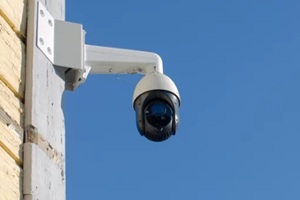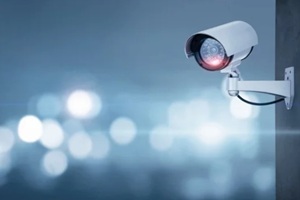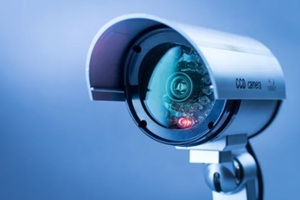 Security systems have come a long way from the days of grainy footage and passive monitoring capabilities. Today’s businesses operate in environments that demand smarter, faster, and more adaptive responses to potential security threats, which is precisely where modern AI camera surveillance shines.
Security systems have come a long way from the days of grainy footage and passive monitoring capabilities. Today’s businesses operate in environments that demand smarter, faster, and more adaptive responses to potential security threats, which is precisely where modern AI camera surveillance shines.
As AI becomes more accessible and reliable, the contrast between traditional CCTV and AI cameras is becoming increasingly relevant to organizations of all sizes.
What Is Traditional CCTV?
Traditional CCTV, short for closed-circuit television, relies on a network of cameras connected to monitors and recording systems.
These systems are primarily used to observe real-time footage or to review video after an incident. While the concept is straightforward, the limitations become apparent as soon as the system scales.
Traditional CCTV requires consistent human monitoring to be effective; guards or security personnel must watch live feeds or comb through hours of recorded footage to identify events of interest, which is time-consuming and labor-intensive.
This approach is not well-suited to modern demands. Maintaining full awareness becomes more difficult as the number of cameras increases, leading to higher chances of missed incidents.
Traditional systems generally do not offer built-in analytics, intelligent alerting, or the ability to integrate seamlessly with other modern security technologies. As a result, traditional CCTV can serve as a basic deterrent and evidentiary tool, but it falls short of delivering proactive security or advanced insights.
What Is AI-Powered Surveillance?
AI-powered surveillance takes video monitoring to the next level by introducing machine learning and computer vision technologies. These systems are designed to analyze real-time video streams, detect objects, identify behaviors, and recognize patterns without constant human supervision.
When something unusual happens, such as an unauthorized person entering a restricted area, a weapon being displayed, or someone falling, AI camera systems can immediately trigger alerts sent directly to security teams or integrated platforms.
More than just reactive tools, AI surveillance platforms can interpret environmental data to generate valuable insights that improve operational decisions. For example, heat maps can show crowd movement trends, and detection logs might reveal repeated instances of safety violations.
Primary Differences Between Traditional CCTV and AI Surveillance
|
Feature |
Traditional CCTV |
AI-Powered Surveillance |
|
Real-Time Analysis |
Manual monitoring |
Automated with AI |
|
Object Detection |
Manual review only |
Automated detection and tracking |
|
Alert Capabilities |
Basic motion detection |
Context-aware intelligent alerts |
|
Review Process |
Lengthy manual review |
Fast search with event tagging |
|
Scalability |
Limited scalability |
Highly scalable, cloud-enabled |
|
Integrations |
Typically standalone |
Integrates directly with alarms and access control |
Advantages of AI-Powered Surveillance
 One of the most compelling benefits of AI camera surveillance is the ability to identify risks as they happen, not just after the fact. Immediate alerts allow for faster intervention, reducing the likelihood of damage, theft, or harm.
One of the most compelling benefits of AI camera surveillance is the ability to identify risks as they happen, not just after the fact. Immediate alerts allow for faster intervention, reducing the likelihood of damage, theft, or harm.
AI camera systems also reduce the need for constant human review. Rather than assigning staff to monitor multiple screens for long shifts, AI filters the feed and notifies staff only when something requires attention. Reducing mental fatigue allows humans to stay engaged and make better decisions when their involvement is essential.
Searchable footage is another significant benefit to consider. Through automated event tagging and activity indexing, AI simplifies video retrieval using searchable keywords or precise time references. What used to be a multi-hour investigation can often be resolved in a fraction of the time using modern tools.
Over time, the system collects valuable data to help identify operational inefficiencies or recurring security issues, leading to better planning and resource use.
Use Cases for AI Surveillance
The versatility of AI-powered surveillance makes it well-suited for various uses and applications.
For instance, at access points, AI systems can verify identity credentials and detect unauthorized entries, making entryways more secure. On large properties or industrial sites, AI handles intrusion detection more effectively than periodic human patrols.
In public settings such as campuses, stadiums, or transportation hubs, AI helps monitor crowd flow, detect aggressive behavior, and identify unattended objects that may pose a risk. Sectors such as healthcare and education stand to gain the most from intelligent features that improve safety and awareness, such as fall detection.
For compliance-heavy environments, an AI camera can monitor adherence to safety protocols, such as mask-wearing or room capacity limits, which adds another layer of value to their implementation.
Considerations Before Transitioning
Transitioning to an AI surveillance system does require planning. The first consideration is an organization’s existing infrastructure.
Some existing IP cameras may support AI capabilities, while others may need upgrades or replacements. Organizations must also evaluate whether cloud-based or on-premises processing better suits their operational needs and compliance environment.
Data privacy should be a leading concern, especially in areas subject to strict regulations such as the General Data Protection Regulation (GDPR). AI systems often collect and process sensitive footage, so comprehending storage policies, retention limits, and access controls is essential.
Budgeting for AI surveillance involves more than installation costs, because while the upfront investment can be higher than traditional CCTV, the return over time is often significant. Reduced manpower, faster incident resolution, better regulatory compliance, and improved operational awareness all contribute to long-term value.
Staff training is equally important here; your teams must be prepared to interpret alerts, act on system recommendations, and maintain confidence in automated processes.
Smarter Security Starts With the Right Partner

Choosing to upgrade from traditional CCTV to an AI camera system is more than a basic tech decision; it’s a step toward building smarter, more proactive security throughout your organization.
At Advantage Technology, we guide businesses through that transition with experience, clarity, and a focus on what actually works. With decades of experience in IT infrastructure, security, and system integration, we bring the insight and technical depth required to move your surveillance strategy forward.
To learn what’s possible for your business, call us today at 1-(866)-497-8060 or schedule a consultation online.

